I'll be honest, when I used to think of performance footwear Skechers wasn't the first brand that came to mind. I previously associated Skechers with casual shoes or heavy sneakers - the type that I haven't worn in years. In early 2012 I started noticing ads and reviews for the Skechers GO line of shoes and started to become intrigued. One of the first shoes launched in the GO line was the GOrun Ride. The GOrun Ride was aimed at runners with a forefoot strike and received favorable reviews. My interest was piqued but not enough that I ventured away from my go-to brands. Some time later I noticed that Skechers had sponsored Meb Keflezighi (I guess advertising through sponsorships works!) - currently one of the top American marathon runners - and that he raced in a Skechers shoe. I figured "If Skechers is good enough for Meb I should at least take a closer look...".
My interest in Skechers grew even more after reading early previews of the GObionic shoes. From what I had read online, the Skechers GObionic was a light, wide, flexible, low profile, and zero-drop shoe that had a bit of cushioning but still allowed for acceptable ground feel. I was even more intrigued!
1st Impressions
The styling is simple: a clean fabric upper on a foam base made of Resalyte; a proprietary foam-like material Skechers uses on their performance line. When I pulled the shoes out and looked at the outsole, the segmented foam base reminded me of the Nike Free. However, a key difference between the GObionic and Nike shoes was clear; the GObionic shoes are much wider than any of the Nike shoes I've worn. The shoes felt light, very flexible and were begging to hit the road for a run.
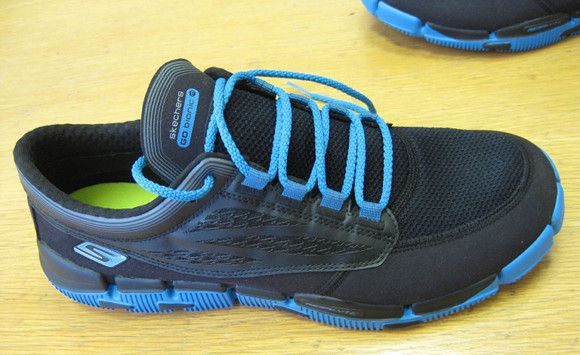
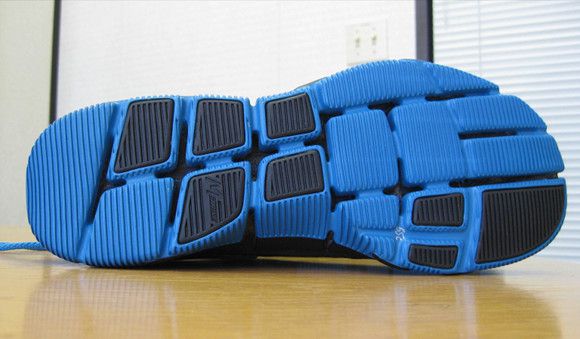
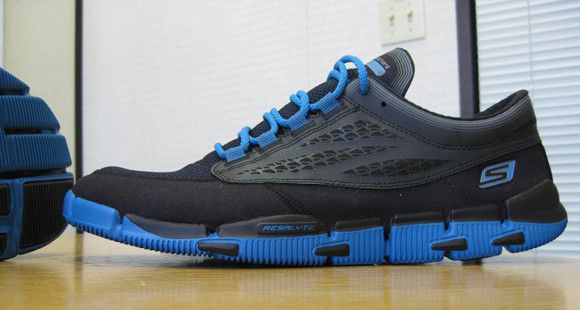
After shedding whatever shoes I happened to be wearing that day, I put on the GObionics and confirmed that the toe box is very roomy, even with socks on, my toes were able to splay naturally. From the side the shoe's midsole looks very thick, but that extra material is only on the outside, perhaps to add a little lateral stability.
During my first run in the GObionics it felt like I had strapped into a familiar shoe. The shoes felt more cushioned than most shoes I run in, but did not impede my gait or cadence. My running stride felt natural and my feet felt comfortable in the shoes. Even without much structure to the upper my foot felt stable and not sloppy. I believe that the width of the shoes combined with a relatively low stack height are what provide the sense of stability. My first impressions were positive across the board and I was looking forward to logging many test miles in the shoes.
Key Stats
- Weight: 6 oz in Men’s Size 9
- Midsole: 11.5 mm Resalyte
- Heel to Toe Drop: 0mm
- Materials: fabric, mesh upper coated with Scotchgard for stain protection and agion silver antimicrobial solution for odor control
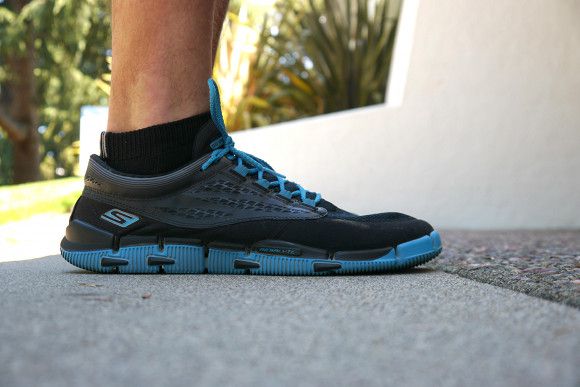
Long-term testing and impressions
When I received the shoes in early June, they quickly moved into the top spot in my road shoe rotation. I have now run over 250 miles in the GObionics and am quite happy with their performance. My early positive impressions have been confirmed and only a few minor negatives are worth noting.
First the positives. The wide and flexible base combined with a roomy toe box has worked very well in every type of run I've tried. During long runs(15+ miles) the shoes allow plenty of space for my feet and work well with several different brands and styles of socks. I have had zero issues with blisters or hot spots. The cushioning provided by the shoes was especially appreciated during the end of longer runs when my form begins to break down a bit. It's worth emphasizing that the shoes are not overly cushioned and I can still feel the various surfaces and textures I run across however the typical enemies of minimalist shoes (small pointy rocks, etc) do not bother me as much as they do in more minimally cushioned shoes. During shorter tempo runs or even interval sessions the shoes low weight (6.1 oz in Men’s size 9) has worked out very well; I've had no issues maintaining my paces. For speedwork, I still tend to grab even lighter shoes, but the GObionics have performed very well.
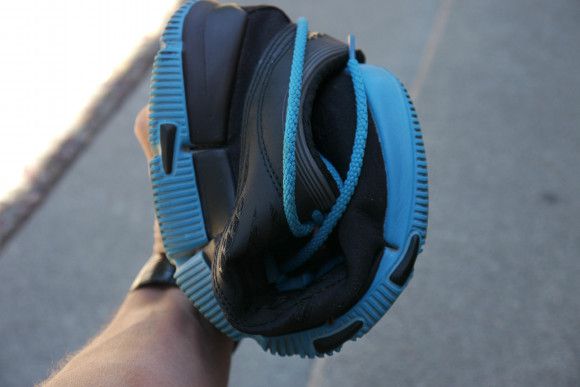
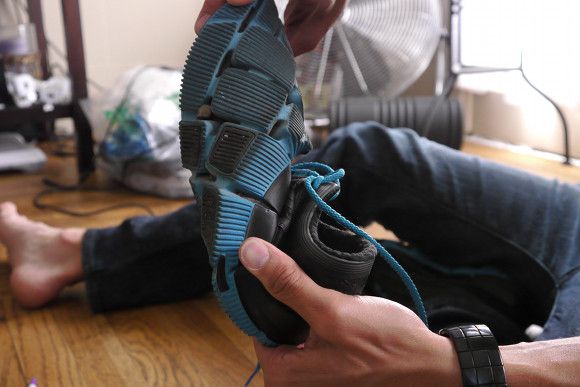
As I mentioned, I have had a few minor annoyances with the shoes. The first is with the insoles. Skechers included a removable insole in the GObionic. I usually remove insoles to create even more space in shoes and also to remove any heel to toe drop or arch support that might be built in to the insoles. Since the Skechers insoles are very thin and did not seem to add drop or arch support I left them in. After several runs I noticed that the insoles were moving in the shoes and seemed to be riding up the heel a bit. When I decided to test out the shoes sockless, the insoles moved even more. It seems the insoles stuck to my feet and socks more than the inner base of the shoe. I have since removed the insoles and don't miss them, hence the issue is relatively minor. Without the insole the base of the shoe is a bit thin allowing me to feel the segmented outsole, but again this minor annoyance isn't enough to keep me from enjoying the shoes.
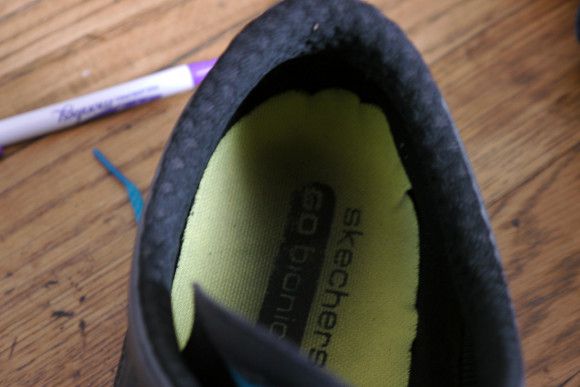
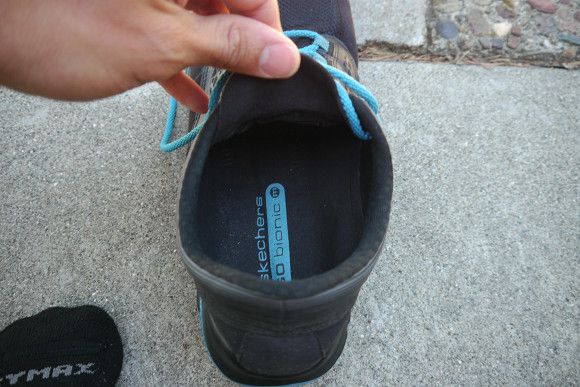
The second area where I noticed a couple minor issues is the outsole. As previously mentioned, the shoes sit on a segmented outsole made mostly of Restalyte with rubber added to a couple of high wear areas. The segmented design makes for a very flexible shoe which is great, but the flexing also allows for small pebbles and debris to get stuck between the segments. As I use the shoes on mostly asphalt and concrete the pebble-trapping has not been a major problem, though I do have to occasionally stop or slowdown to pick a pebble from the outsole.
I've have also noticed that after 200 miles the Restalyte material is wearing away in contact areas that do not have the rubber reinforcement. I believe the wear is partly due to my foot-strike and running technique but wear-resistance could be improved by adding a bit more rubber to the outsole. I shared these minor issues with Skechers and I was very impressed with their response. Skechers was open to my feedback and mentioned they were already hard at work implementing improvements for future models.
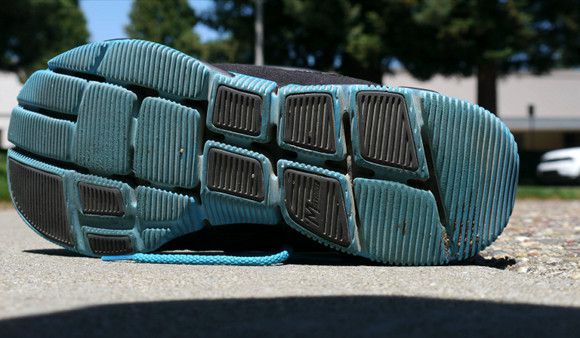
As another example of the shoes durability, when I found myself wearing the shoes during a wet and very muddy music festival, I was sure the shoes would show permanent effects of the grime but I was pleasantly surprised when a quick rinse in a tub left the shoes looking good as new. I have since found out that the shoe is coated with Scotchgard (the water and stain repellent that apparently works quite well) and after a lot of use the shoes still look great.
Final Thoughts
When I first heard of the Skechers GObionic I was hopeful that they would be a lightweight, zero drop, wide, and flexible shoe that provided just the right amount of cushioning for everything from short training runs to marathons. Now that I have been testing the shoes for a few months I am very pleased with the product Skechers has produced. I like the GObionic so much that I chose them as my footwear of choice for the Chicago Marathon in early October. As any road runner knows, the decision on what to wear for a marathon is never taken lightly. I hope to share a bit more about the race in a later article, but long story short the GObionics performed very well and I ran a marathon PR.
I recommend the Skechers GObionic for any runner who is looking for a minimalist shoe with just a bit of cushion. I want to remind anyone switching from a shoe with a built up heel that they should slowly transition into the GObionic, as the decreased heel height can potentially stress the Achilles' tendon and calf as they slowly stretch. Skechers has delivered a great product with the GObionic and I will be watching to the GO line with great interest as they grow their performance line.
